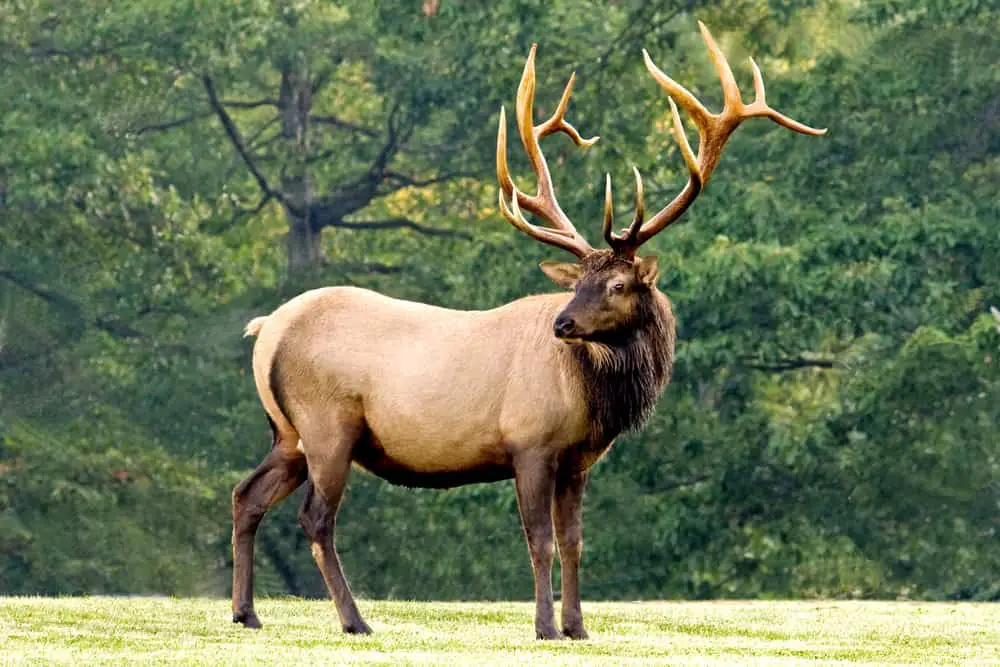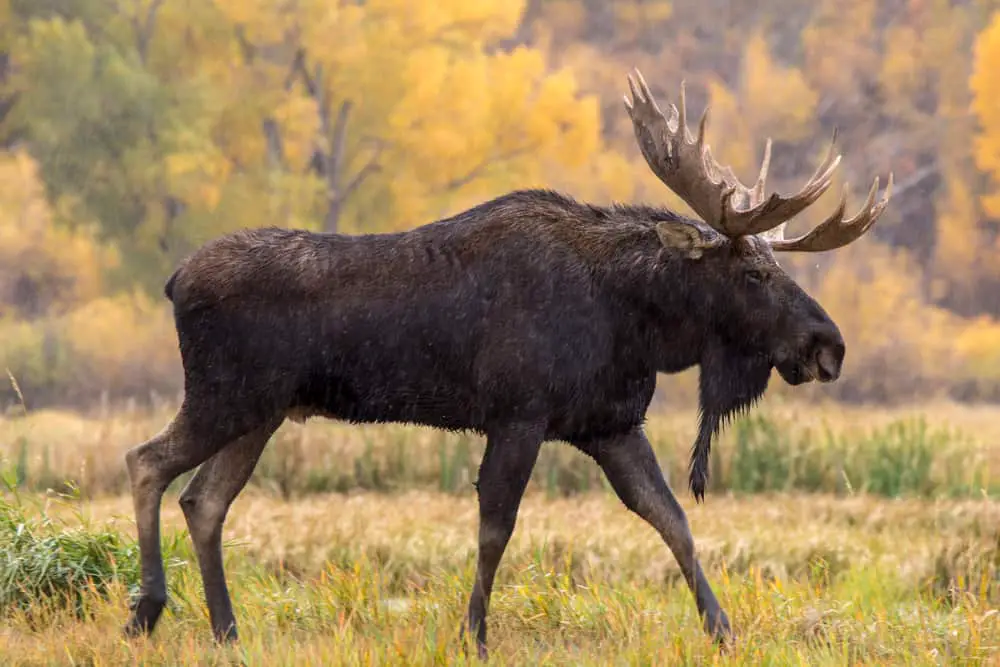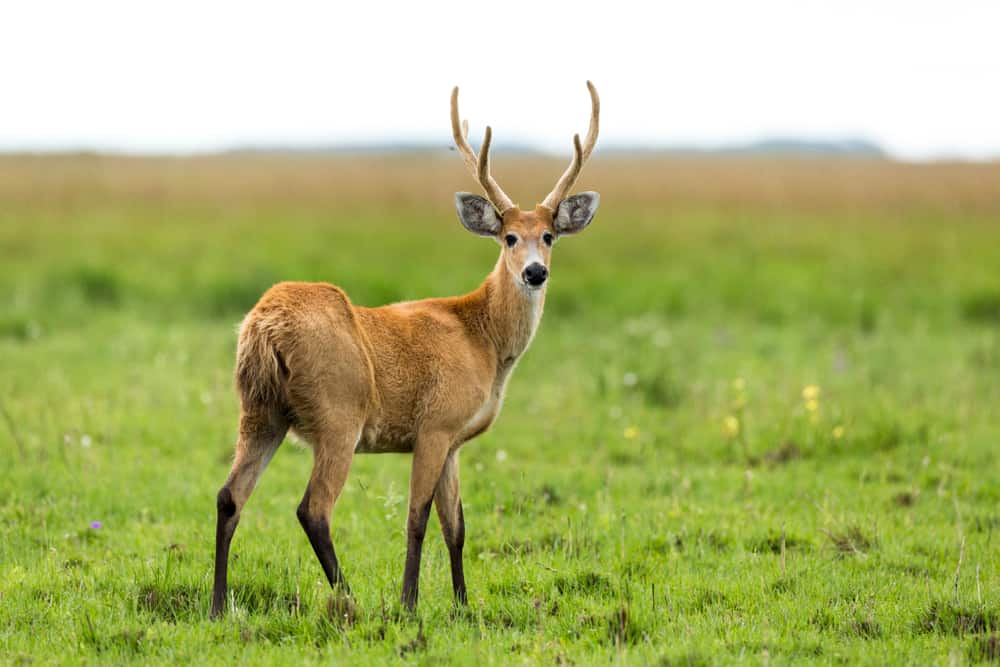
Elk, also known as the wapiti, are one of the largest species within the deer family. Part of the Cervidae family branch, they are mammals native to North America and eastern Asia. Elk, like other members of the deer family, live in forests and forest-adjacent habitats where they feed on elk, plants, leaves, bark and the occasional berry.
Males are known for their large antlers that they shed every year, ritualized mating behaviors including rutting, posturing, antler wrestling, and bugling.
There are about 53 species belonging to the Cervidae family, which split down into 19 genera and 3 different subfamilies. They are spread throughout the world and can be found on nearly every continent, ranging in size from 13 inches tall to nearly eight feet tall.
Table of Contents
- Moose
- Marsh Deer
- Roe Deer
- South Andean Deer
- Taruca
- Amazonian brown brocket
- Mule deer
- White-tailed deer
- Pampas deer
- Pudu
- Reindeer
- Chital
- Red deer
- Sika Deer
- Thorold’s deer
- Fallow deer
- Tufted deer
- Pere David’s deer
- Bawean deer
- Muntjac
Moose

Moose are the largest relatives to the Elk, found in North America and Eurasia. They are most commonly seen in Canada, Alaska, New England, Poland, and Russia. They mostly eat terrestrial and aquatic vegetation like elk do but don’t let their vegetarian diet fool you. Moose are some of the most aggressive Cervids.
Male moose have massive antlers that look like clawed hands, and the female cows can and will attack everything to protect their young. Moose shares similar features to Elk, such as split hooves, horns, and mating habits. They differ mostly in size and location.
Marsh Deer

Marsh deer are often confused with another family member called the Barasingha because they are both sometimes called Swamp deer. Found in Argentina, Peru, Uruguay, Bolivia, Brazil, and Paraguay, the marsh deer is the largest deer found in South America as they commonly reach around 4 feet tall.
Marsh deer are pretty visually different from elk. Large ears lined with white hairs, white marks on their hips and around the eyes, their fur darkens during winter as well. Like Elk, the marsh deer eat … Read the rest of the story.
No comments:
Post a Comment